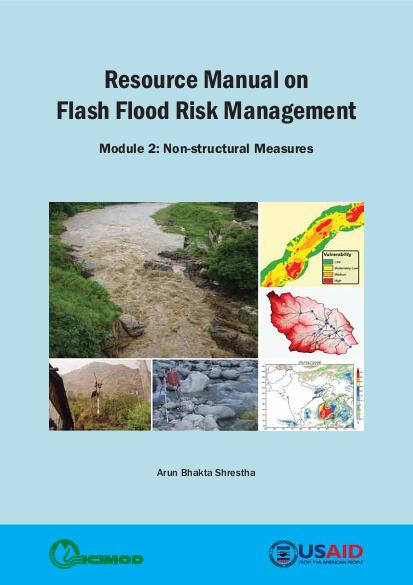
Flash fl oods are among the most destructive natural disasters in the Hindu Kush-Himalayan region. They are sudden events that allow very little time to react. They often occur in isolated remote mountain catchments, where there are few, if any, institutions equipped to deal with disaster mitigation and where relief agencies are either absent or have limited presence and capacity to manage the results of natural disasters. Often the management of fl ash fl oods is done primarily by community-based organisations, local non-governmental organisations, or district and ward-level staff of governmental organisations. However, these people often lack adequate understanding of the processes causing fl ash fl oods and knowledge of fl ash fl ood risk management measures. Building the capacity of those working directly in fl ash fl ood-prone catchments will help to reduce fl ash fl ood risk in the region.
This manual provides resource materials for understanding the problem and managing the risk. The manual is prepared in two modules. The fi rst concerns community-based fl ash fl ood risk management. This second module concerns technology-based non-structural fl ash fl ood risk management. Chapters 1 and 2 of this module introduce the natural setting of the region: topography, geology, climatic systems, and so on. Chapter 3 describes three major types of fl ash fl ood that occur in the region: intense rainfall fl oods, landslide dam
outburst fl oods, and glacial lake outburst fl oods, supplemented by examples and case studies. Chapter 4 explains ways to assess fl ash fl ood risks. Chapter 5 describes general, non-structural fl ash fl ood risk management measures. Chapter 6 provides insight into some hazard-specifi c measures.
